Delegates of PR Society of America will consider a proposal to give Bill Murray the single title of CEO, replacing the titles of president and COO he has had since 2007.
Chair-elect Joe Cohen of MWW Group would only have the title of chair in 2014. He would lose the title of CEO that he won in last year’s election.
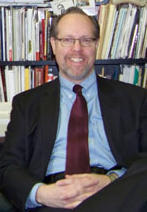 |
The changes, which are not in the "newsroom" or public area of the Society website, will be discussed Thursday at a teleconference open only to leaders.
If passed, the governance changes will consolidate more power at h.q. PR Society governance practices are different from those at associations for lawyers, doctors and CPAs.
All three groups always have staffs headed by members of the profession involved. Murray, previously at the Motion Picture Assn., is an association careerist. All three also have large numbers of their own professionals on staff. The PR Society only has three PR people among a staff of 50+.
Laurel Bellows is the elected president of the American Bar Assn. and Jack Rives, a lawyer, is executive director.
ABA has a House of Delegates that is presided over by its own elected chair, Robert Carlson of Butte, Mont. The ABA board gets its policy directions from the House of Delegates.
Assembly Blocked Governance Reform
An attempt in 2006 by the Central Michigan chapter to give the Assembly control over the board, citing the bylaws of the ABA and American Medical Assn., was defeated after ten minutes of discussion by a vote of 261-19. None of the other 109 chapters supported it.
The AMA’s CEO and executive VP is James Madara, M.D. Ardis Dee Hoven, M.D., is the elected president.
Barry Melancon, CPA, is staff president and CEO of the American Institute of CPAs. Elected chair is CPA Richard Caturano.
Only two bylaw amendments are up for consideration at the PR Society Assembly Saturday, Oct. 26. It usually lasts the entire day.
Last year there were no proposals at all, causing several senior members to blast it as "the most useless Assembly ever."
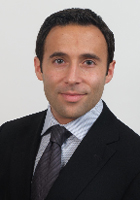 |
The morning session was taken up by 11 leader speeches including 20 minutes on elections when no positions were contested. With no amendments to consider, the afternoon session was supposed to be an “unconference” at which anything could be discussed. However, leaders decided the only topic they would allow was how to bring in more members. The Society is about the same size as it was in 2000 when it had 20,266 members. A figure of “21,000” is currently used on the Society website.
A dues hike of $30 in 2012 has not put the Society in the black. It had an operating loss of $18,719 for the first half after reporting an operating profit of $403,048 in Q1.
Stress of VP-PR Job Needs Study
The sudden death of VP-PR Arthur Yann June 13 at the age of 48 should be examined by a special task force of the Society.
PR is rated No. 5 on a list of the ten most stressful occupations by careercast.com.
No. 1 is enlisted military personnel with a rating of 84.72. PR, at 48.52, is ranked as even more stressful than senior corporate executive, with a 47.46 rating.
Murray himself, in reporting the death of Yann, said he had “one of the toughest jobs in PR.” A committee should explore just what it is that makes the job so tough. Murray posted Yann’s death on the Society website Sunday night which was four days after it took place.
PR practitioners don’t need to look at the stress ratings of careercast or any other place to know how stressful their jobs are.
Careercast notes that “heart attack is commonly associated with stress.”
Corporate PR people are under pressure to push corporate messages and also under stress from reporters who have flocks of questions and demands to interview executives. Quite often the PR person is the shield for the executive staff. PR can also function as the spear. This was one of the tasks of Yann. He criticized O’Dwyer reporting not only on the Society website but a half dozen blogs.
Psychotherapist Susan Price told a meeting of the PR Office Managers Assn. in 1990 that “PR is one of the most stress-filled professions.”
She said PR people are highly motivated but can be “ground down by their own enthusiasm.” Agencies with a high rate of account turnover are particularly stressful since employees fear loss of their jobs and may start competing with each other, she said.
VP-PR Reports only to Murray
The specs for the replacement for Yann say that the post reports to Murray and other staffers rather than the board.
A career PR person should be the head of the staff, copying the legal, medical and accounting professions.
The new VP-PR should report to the elected head of the Society who should have the titles of president and CEO.
Murray should be XVP. The Assembly should model its governance after legal, medical and accounting groups.
Consolidating more power at h.q. only means a continuation of press-avoiding, member-avoiding, and New York-avoiding practices and a further tightening of information flow. Members have lost the printed members’ directory (which could easily be a PDF); list of Assembly delegates; transcript of the Assembly; staff list; 110 chapter presidents’ list and timely release of IRS Form 990 with pay packages of top staffers and other information.
Staff domination is evident in the inability of 2013 conference co-chairs Oscar Suris of Wells Fargo and Patrice Tanaka of PadillaCRT to have any say on press access to the conference which is being limited by the staff. A New York member has had his Society web rights revoked without explanation but chapter leaders say they are powerless to do anything.
New Press-Blocking Rule Created
Spokesperson Stephanie Cegielski has added a new burr to the press’s hide—no PR medium will be allowed to cover more than one day of the four-day 2013 conference.
No “credentials” have been given to any press so far and it looks like all reporters will be barred from the Assembly for the third year in a row.
Although the Society espouses “democratic” principles, none of the current eight candidates for the national board will give their positions on issues facing the Society, such as the continued monopoly of APRs on national offices. The candidates don’t even acknowledge receiving the questions. Opponents can file up to Sept. 26.
The Society is an example of a trade group taken over by non-members.


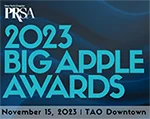 PRSA-NY today announced its five honorary co-chairs for its Big Apple Awards ceremony gala slated for TAO Downtown on Nov. 15.
PRSA-NY today announced its five honorary co-chairs for its Big Apple Awards ceremony gala slated for TAO Downtown on Nov. 15. PRSA-NY president Carmella Glover today issued a "heartfelt apology" on behalf of the chapter for her Oct. 14 message that "caused disappointment and hurt to some of our valued members."
PRSA-NY president Carmella Glover today issued a "heartfelt apology" on behalf of the chapter for her Oct. 14 message that "caused disappointment and hurt to some of our valued members."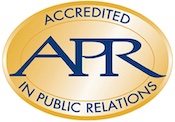 The leadership of Public Relations Society of America is backing a move to change the current “must-have” APR accreditation to “strongly preferred” as a requirement for a seat on its board of directors.
The leadership of Public Relations Society of America is backing a move to change the current “must-have” APR accreditation to “strongly preferred” as a requirement for a seat on its board of directors.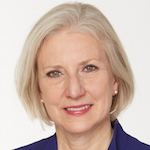 Public Relations Society of American today named Linda Thomas Brooks CEO, succeeding CFO Phil Bonaventura, interim chief since July 2019.
Public Relations Society of American today named Linda Thomas Brooks CEO, succeeding CFO Phil Bonaventura, interim chief since July 2019.


 Have a comment? Send it to
Have a comment? Send it to 
No comments have been submitted for this story yet.